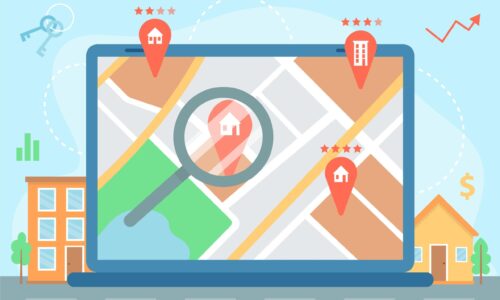
Local SEO is the unique search engine optimization technique that lets online businesses to reach customers based on geographical location. Nine out of ten customers use search engines to find local information. It means businesses that are not optimized for local searches would miss out on 80% of prospects and potential customers.
In general, local SEO helps businesses with small footprints outrank the Giant competitors in the digital world of 2020. It is not something that only local businesses must focus on.
To help optimize your business website for local SEO, a comprehensive guide has been created that covers all local SEO Services and tips to do local SEO successfully for the entire state.
Optimization of Google My Business
Google My Business is the most crucial tool for local SEO search because Google prefers sharing content to verify and support. Google My Business is an SEO tool that helps local businesses to meet Google’s requirements.
If Google successfully verifies your business and considers it authentic, it will reward your website with a coveted sidebar space in the local search results.
To optimize your website for Google My Business, you must create and verify your Google My Business page, utilize Google Posts in your account, respond to reviews authentically, urge your customers to share online reviews, and highlight the locations.
Enhancing Internal Linking Structure
An external link that points to your business website is important for SEO. But at the same time, modifying the internal linking structure is also equally important to boost the local SEO rankings.
Adjusting the internal linking structure is important because:
- It supports web navigation
- Distributes the authority of the page and enhances the ranking power of pages
- Supports website hierarchy and information architecture
Optimization of Title Tags, URL, Meta Description, Headers and Content
Every new blog post published acts as the new indexed page for your website that targets the specific geographic search phrase and offers new opportunities to get found on SERPs.
So, every time you publish new content, optimize it for search engines using high-volume keywords in headers, URLs, title tags, body, and Meta descriptions.
If you are facing challenges to come up with local SEO-based content, prefer highlighting case studies and customer success stories.
Adding Location Page
Businesses with more than one store location must try creating a location page for their website.
The location page offers readers details like address, name, contact details, store hours, parking and transit information, store descriptions, testimonials from satisfied customers, and promotion details.
Avoid duplicating the content across multiple location pages. You must create a local SEO descriptive About Us page for every location business.
Creating Local Content
Google is getting smarter, which means the content developers are forced to write specifically for users and not for search engines.
Writing unique and informative content on general topics would help attract wider audiences. Still, it is important to focus more on content that describes the industry and local news to attract audiences at the local level.
Become a local authority within the industry by promoting local SEO business gatherings, employees, news, and other informative content on the blog section.
Consider writing unique and top of the funnel content that can go beyond what your business sells.
Get Inbound Links with Authority and Relevance
Inbound links are incredibly powerful when it comes to boosting the local SEO. Every inbound link your site gets tells Google that you are a legitimate business, enhancing your domain authority.
Guest blogging is the most effective method for getting inbound links. You may also sponsor webinars or online meets and build relationships with influencers and prominent people to get inbound links.
Ensure your site is Mobile Friendly
Local search and mobile search both are essential as they go hand in hand. Four out of five smartphone users conduct local searches online using their handset.
Some of the common ways people will be using your site on mobile platforms are checking reviews, searching content information, and finding directions to your store or location.
Ensure to meet the needs of your customers and prospects by making the website mobile-friendly.
Ensure Your Content Details are Consistent Online
You have to ensure that online consumers and search engines can locate you easily. You must set up your NAP (Name, Address, and Phone Number with area code).
It must comprise of crawlable HTML text on the site and avoid making errors by including only NAP within an image. Images are not crawlable like HTML text on search engines. The most effective location for NAP is the header or footer of the business website.
Local SEO is a crucial part of any SEO strategy for local brands and businesses. Any business with a service area or storefront must consider local SEO to help their prospects and customers find their business when they search online.







